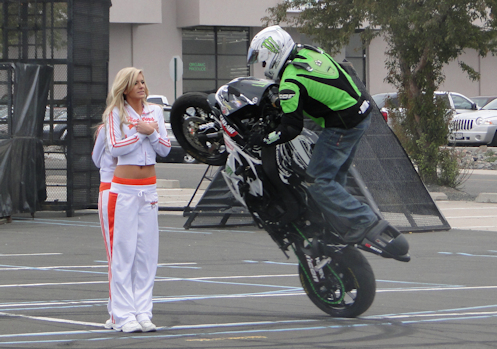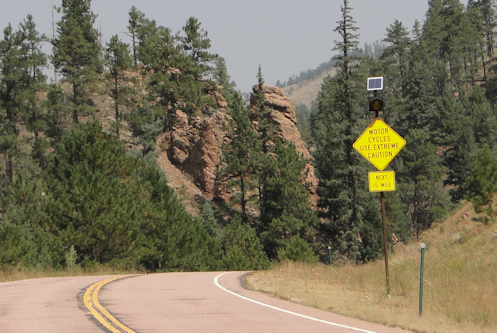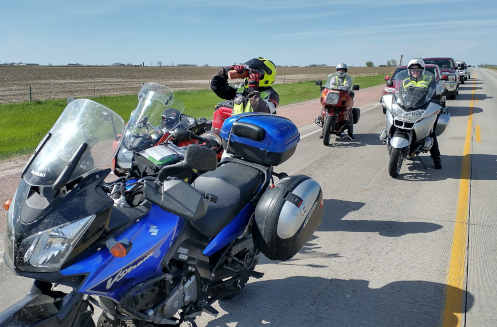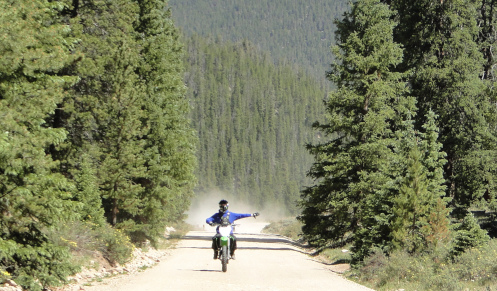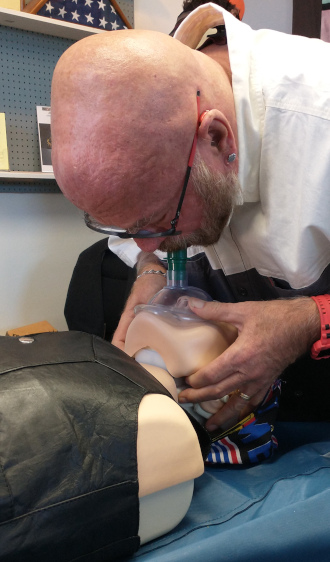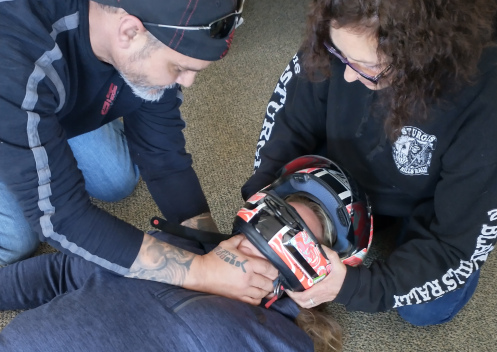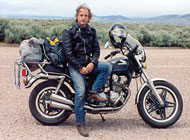Riding Behavior Since Covid
Monday, August 22nd, 2022I was heading out last week on that RMMRC ride I mentioned and had only gotten as far as the collector street coming out of our neighborhood. I looked left and then pulled right, out onto Tamarac, and only seconds later a young guy on a sportbike blasted past me in the parking/bike lane on my right.
That definitely gave me a start and at first I thought I had looked but had not seen him coming along. But after zigging into the traffic lane he then zagged back into the bike lane to pass the car in front of me. So no, it probably wasn’t that I hadn’t seen him, he was probably behind the oncoming car I saw when I looked but in just a flash he had passed that guy and then was right up on me.
We continued up Tamarac and the car ahead of him stopped at a red light. The guy on the bike pulled alongside the car, using the bike lane, of course, looked both ways to see there was no cross traffic, and blasted on through the red. Another two blocks and I came up in the left-turn lane and while he sat at the red at Hampden I made my left turn. Just another of the countless examples I’ve observed where aggressive driving (or riding) gains you almost nothing.
So I headed west on Hampden and was approaching Broadway, but now, stopped two back at a red light, another young guy on another sportbike filtered his way to the front, pulling fully into the pedestrian crossing that everyone else had stopped short of. My immediate question was, is he going to blast through the red, too? He didn’t, but as soon as the light turned he screamed on ahead. And he kept doing that. Again it didn’t work very beneficially for him because by the time we got to where he turned left off Hampden I was still almost right up with him and I was just moving with traffic.
I also wrote not so long ago about coming south on Havana when a guy on a bike first went screaming past all the traffic ahead of him, using the center lane. At a red light with left-turn lanes in both directions he blasted on through the light using the turn lanes. Obviously, if anyone had been turning this would not have been possible but there weren’t and he did.
What’s with all this flagrant disregard of the traffic laws? It seems to have come on during the Covid lock-down. Back when the world had largely shut down and there was no traffic on the roads, the few people who were out found they could scream along at high speed and simply not worry about other traffic because there was no other traffic. Why wait at red lights for absolutely no other vehicles? And they liked that. Hey, who wouldn’t?
Now traffic is back to normal. But these guys are spoiled. They don’t want to give up their newfound freedom to scream down the road and ignore red lights. So they don’t.
That’s a little all right, until someone gets hurt. And really, do they think they’ll always be able to get away with it? I’m all in favor of flaunting the rules a bit as long as no innocent person pays a price. But when someone gets hurt it’s a completely different story. Maybe these guys ought to just accept that they had their moment but now that moment is past.
Biker Quote for Today
You know you’re a biker if You think black and orange would make nice house colors.
